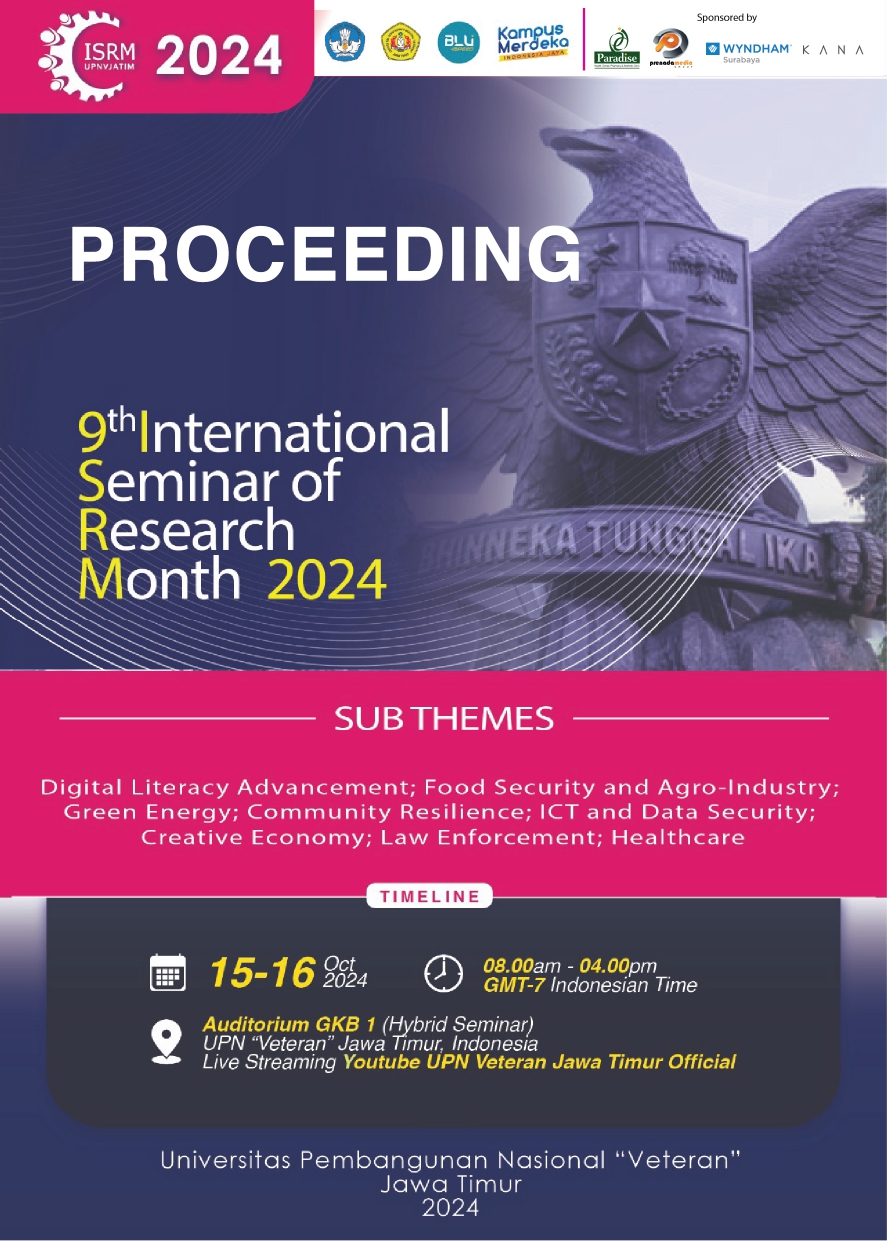Dynamic Governance in Overcoming Stunting Mojokerto Regency
DOI:
https://doi.org/10.11594/nstp.2025.47107Keywords:
Dynamic governance, stunting prevalence, policyAbstract
As a form of commitment to accelerate the reduction of stunting rates, the government has issued Presidential Regulation Number 72 of 2021 concerning the Acceleration of the Reduction of Stunting Rates. This is evidenced by the results of the 2021 Indonesian Nutritional Status Study (SSGI) survey, the stunting rate in Mojokerto Regency reached 27.4 percent and decreased in 2022 to 11.6 percent and in 2023 decreased again to 9.6 percent of cases or 20.0%. Even in 2024, it had a blue status with a prevalence below 10 percent. In this study, the author focuses on how to implement dynamic governance in Mojokerto Regency to overcome stunting. This research method uses a descriptive method with a qualitative approach. There are several methods of data collection used by researchers in this study, namely observation, interviews, and documentation. The data analysis techniques used are data condensation, data display, and conclusion drawing/verification. The results of the study show that dynamic governance in overcoming stunting in Mojokerto Regency can be seen from the results of the last stunting measurement in 2024, which was below 10 percent and had a blue status, indicating a decrease in stunting cases. The stunting control policy also increases child productivity, which is the result of collaboration between various sectors that help in handling stunting in Mojokerto Regency. Conclusion: The Mojokerto Regency Government is advised to increase stunting handling interventions through collaboration between each sector to increase child productivity in Mojokerto Regency. Then the Mojokerto Regency Government is also advised to be able to determine the right policy direction by considering social and environmental changes and the results of previous program evaluations.
Downloads
References
Alim, B. N. (2022). Upaya mewujudkan dynamic governance pada pelayanan publik di dinas kependudukan dan pencatatan sipil kabupaten Sidoarjo. Dialogue: Jurnal Ilmu Administrasi Publik, 4(2), 343–361. https://doi.org/10.14710/dialogue.v4i2.14645
Asnol, U. B. (2023). Faktor-faktor yang berpengaruh terhadap stunting di tujuh desa PKMD Kecamatan Sungai Tebelian Kabupaten Sintang Tahun 2023. Termometer: Jurnal Ilmiah Ilmu Kesehatan Dan Kedokteran, 1(3), 203–227.
Ariyanti, C., Rahmadanik, D., & Widiyanto, M. K. (2024). Implementasi peraturan bupati mojokerto no. 66 tahun 2021 tentang percepatan penurunan stunting terintegritas di kecamatan Gondang. Birokrasi: Jurnal Ilmu Hukum dan Tata Negara, 2(3), 50–61. https://doi.org/10.55606/birokrasi.v2i3.1299
Ernidayati, E., Irianto, S. E., Noviansyah, N., Budiati, E., & Karyus, A. (2022). Faktor-faktor yang berhubungan dengan kejadian stunting di wilayah kerja dinas kesehatan kabupaten Lampung Selatan. Poltekita: Jurnal Ilmu Kesehatan, 16(3), 376–383. https://doi.org/10.33860/jik.v16i3.1385
Heny, A., & Nurdin, M. (2018). Menuju pemerintahan terbuka (Open government) melalui penerapan e-government. Jurnal Manajemen Pemerintahan, 5(1), 1–17.
Jafa, B. J. (2022). Dynamic governance dalam mengatasi stunting di Kabupaten Manggarai Provinsi Nusa Tenggara Timur. Asdaf Kabupaten Manggarai, Provinsi Nusa Tenggara Timur Program Studi Administrasi Pemerintahan Daerah, 2022, 1–18.
Jariah, N., Arfa, U., Fajhriani N, D., Sari, Y. N., & Januarti, U. D. (2024). Dampak stunting terhadap perkembangan kognitif anak usia dini. Jurnal Ilmiah Cahaya Paud, 6(1), 33–38. https://doi.org/10.33387/cahayapd.v6i1.7922
Nadhiroh, S. R., Riyanto, E. D., Jannah, S. Z., & Salsabil, I. S. (2022). Potensi balita risiko stunting dan hubungannya dengan keluarga pra-sejahtera di Jawa Timur: Analisis Data Pk-21. Media Gizi Indonesia, 17(1SP), 112–119. https://doi.org/10.20473/mgi.v17i1sp.112-119
Neo, B.S., & Chen, G., (2007. Dynamic governance: Embedding culture, capabilities and change in Singapore, World Scientific Publishing Co. Pie. LTD
Priyono, P. (2020). Strategi percepatan penurunan stunting perdesaan (Studi Kasus pendampingan aksi cegah stunting di Desa Banyumundu, Kabupaten Pandeglang). Jurnal Good Governance, 16(2), 149–174. https://doi.org/10.32834/gg.v16i2.198
Rahman, H., Rahmah, M., & Saribulan, N. (2023). Upaya penanganan stunting di Indonesia. Jurnal Ilmu Pemerintahan Suara Khatulistiwa (JIPSK), VIII(01), 44–59.
Setiyawati, M. E., Ardhiyanti, L. P., Hamid, E. N., Muliarta, N. A. T., & Raihanah, Y. J. (2024). Studi literatur: Keadaan dan penanganan stunting di Indonesia. IKRA-ITH HUMANIORA: Jurnal Sosial Dan Humaniora, 8(2), 179–186. https://doi.org/10.37817/ikraith-humaniora.v8i2.3113
Putra, D. T. F. (2020). Kapabilitas dynamic governance dalam pencapaian pertumbuhan ekonomi provinsi kepulauan Riau Tahun 2012 – 2017. KEMUDI: Jurnal Ilmu Pemerintahan, 4(2), 144–176. https://doi.org/10.31629/kemudi.v4i2.1460
Yadika, A. D. N., Berawi, K. N., & Nasution, S. H. (2019). Pengaruh stunting terhadap perkembangan kognitif dan prestasi belajar. Jurnal Majority, 8(2), 273–282.
Downloads
Published
Conference Proceedings Volume
Section
License

This work is licensed under a Creative Commons Attribution 4.0 International License.
Authors who publish with this proceedings agree to the following terms:
Authors retain copyright and grant the Nusantara Science and Technology Proceedings right of first publication with the work simultaneously licensed under a Creative Commons Attribution License that allows others to share the work with an acknowledgement of the work's authorship and initial publication in this proceeding.
Authors are able to enter into separate, additional contractual arrangements for the non-exclusive distribution of the proceedings published version of the work (e.g., post it to an institutional repository or publish it in a book), with an acknowledgement of its initial publication in this proceeding.
Authors are permitted and encouraged to post their work online (e.g., in institutional repositories or on their website) prior to and during the submission process, as it can lead to productive exchanges, as well as earlier and greater citation of published work (See the Effect of Open Access).














